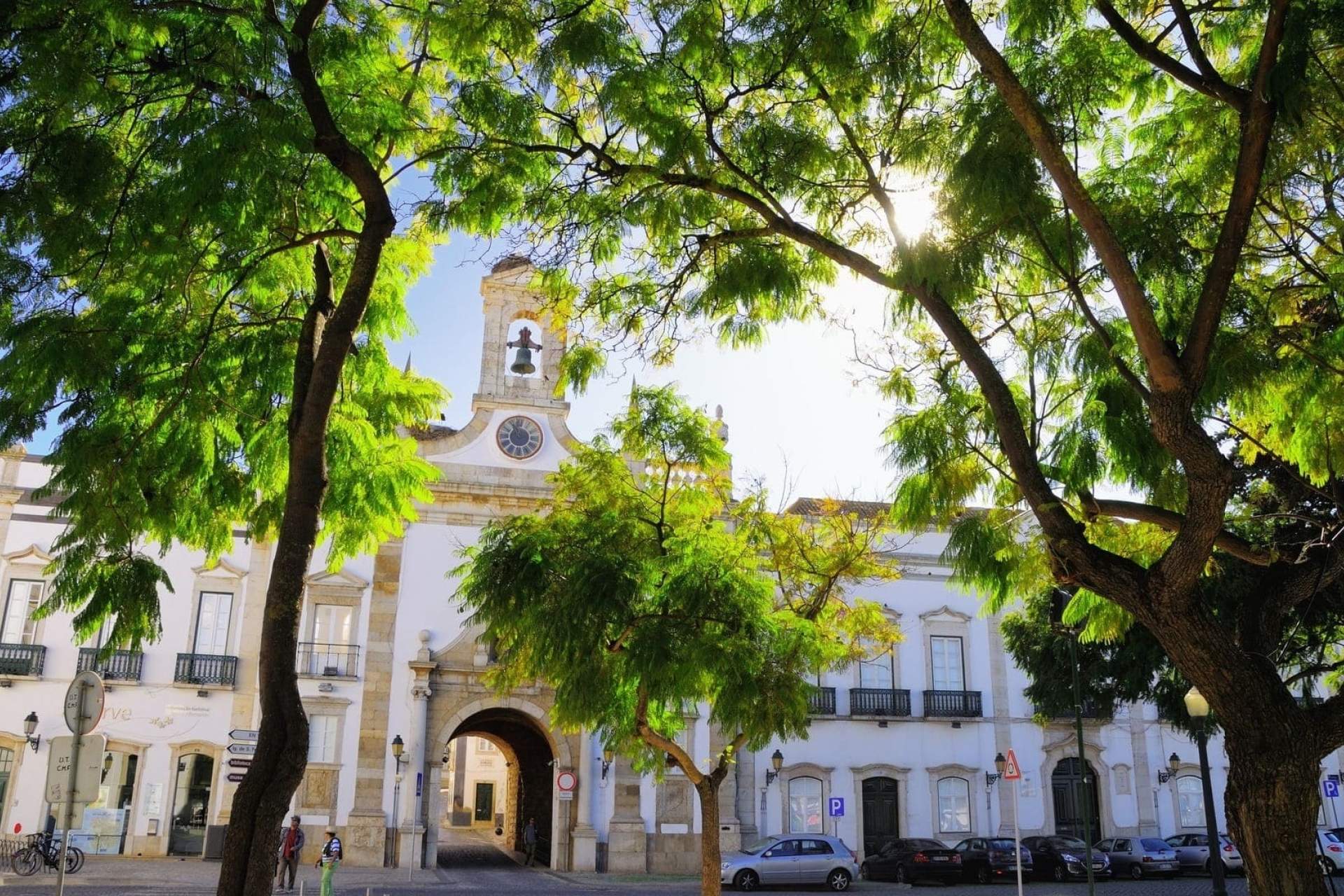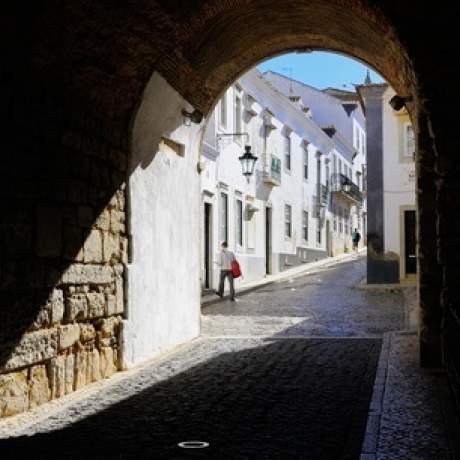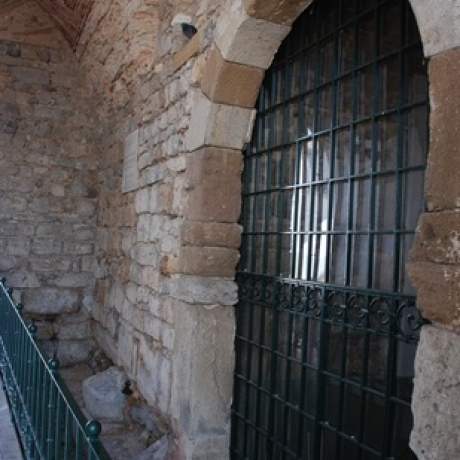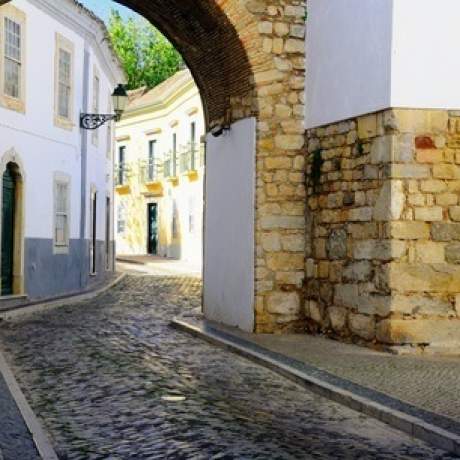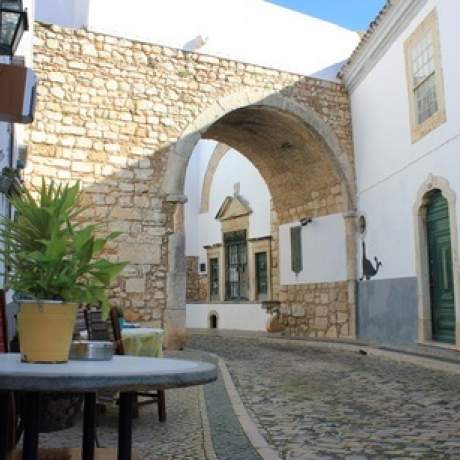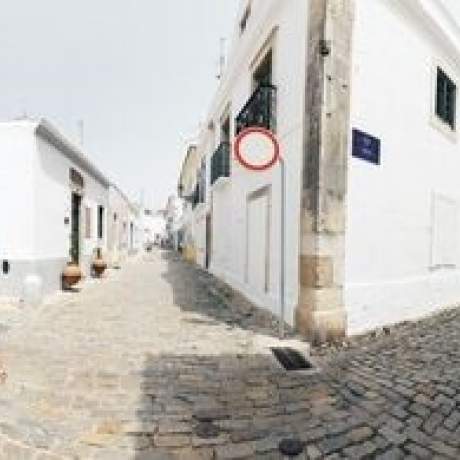
Cidade velha de Faro
The Islamic city of Faro, originally called Ukxûnuba (Arabic transcription of its Latin name Ossonoba), saw its name changed in the 11th century to Santa Maria Ibn Harun, at the time of the miracle described in one of the songs of King Afonso X of Castile: on the city walls there was an image of the Virgin, patron saint of the resident Christian community, which the Muslims threw into the sea, causing the land and the sea to stop producing. The then Muslim governor, Mohamed ibn Saíd ibn Harun, rescued the image from the sea and invoked Saint Mary to help him. The miracle happened and the land began to bear fruit again and the sea had an abundance of fish. The city started to be called Santa Maria Ibn Harun, a patronymic that gave origin to the current name of the city.
The privileged geographical situation and its natural and defensive riches, praised by various Al-Andalus poets and geographers, meant that during the Islamic occupation, the port city assumed regional importance, rivalled only by Silves.
The capture of the city of Faro, along with the conquest of the last Muslim strongholds in the Algarve, in 1249, by King Afonso III, brought an end to Islamic domination of the Portuguese Kingdom.
The current urban layout of the city still allows us to see the perimeter walls that protected the city, a centre currently known as Vila-Adentro. The original idea of protecting the centre was the work of Ben Bekr, a Muslim prince of the 9th century.
The Arab Gate also dates from Islamic times and was the entrance to the city for those arriving by sea. It is considered the only example of Arab architecture in Portugal, considering the good state of conservation and the fact that it is still in its original location, and that we can still see inside the Village’s Arch. After the Almohad invasion, in the 12th century, two Albarrana towers were built in order to reinforce the city's defences, which are currently integrated in the Rest Arch.
If you want to know more about the Islamic legacy in Faro, make sure to visit the Faro Municipal Museum, the second museum to be created in the Algarve in 1894, where we can find real archaeological treasures from the Islamic period.
Close
Search results for:
No results were found matching your search.
Information available soon.


